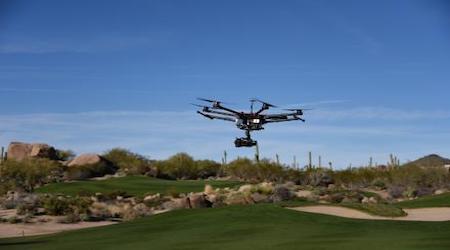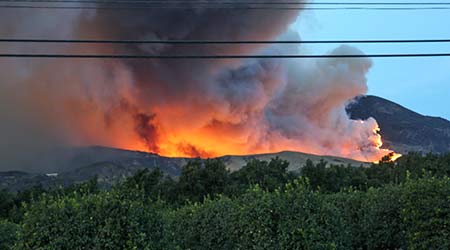
Bird’s-Eye View: Drone Boosts Irrigation Efficiency
October 23, 2019
Water shortages nationwide have created a headaches for grounds managers in many institutional and commercial facilities. Chief among their challenges is ensuring their irrigation systems are operating efficiently and delivering water where and when landscapes need it. While this process generally is handled by workers on foot and in utility vehicles surveying landscapes, one organization took a high-level approach to the issue.
La Rinconada Country Club in Santa Clara Valley, Calif., significantly reduced its outdoor water use on its golf course by taking to the sky, according to the EPA’s WaterSense program. In response to droughts and corresponding water restrictions in California, La Rinconada instituted regular landscape water audits and enlisted a drone to survey the golf course to better target daily watering needs.
The country club hired a contractor who attached a special camera to a drone to take hundreds of visible-light, near-infrared, and thermal images of the golf course to develop a complete and complex view of the landscape. Using these three different types of images, the country club identified plants that were experiencing stress from water loss or disease to help pinpoint watering needs and reduce water waste. The drone flew daily to allow staff to make watering corrections immediately.
In addition to its daily drone inspections and Google maps approach, La Rinconada incorporated native grasses, woody plants, and chipped beds into the landscape to reduce the need for irrigation. Over seven years, more than 10 acres were converted from turf to local, climate-appropriate plants.
After this 110-acre landscape reached a peak of 121 million gallons of annual water use in 2013, with a combination of irrigation audits, water management, and drone use to make daily adjustments, the country club reduced its peak water us by 54 million gallons, saving approximately $160,000 per year.
Dan Hounsell is editor-in-chief of Facility Maintenance Decisions.
Next
Read next on FacilitiesNet












